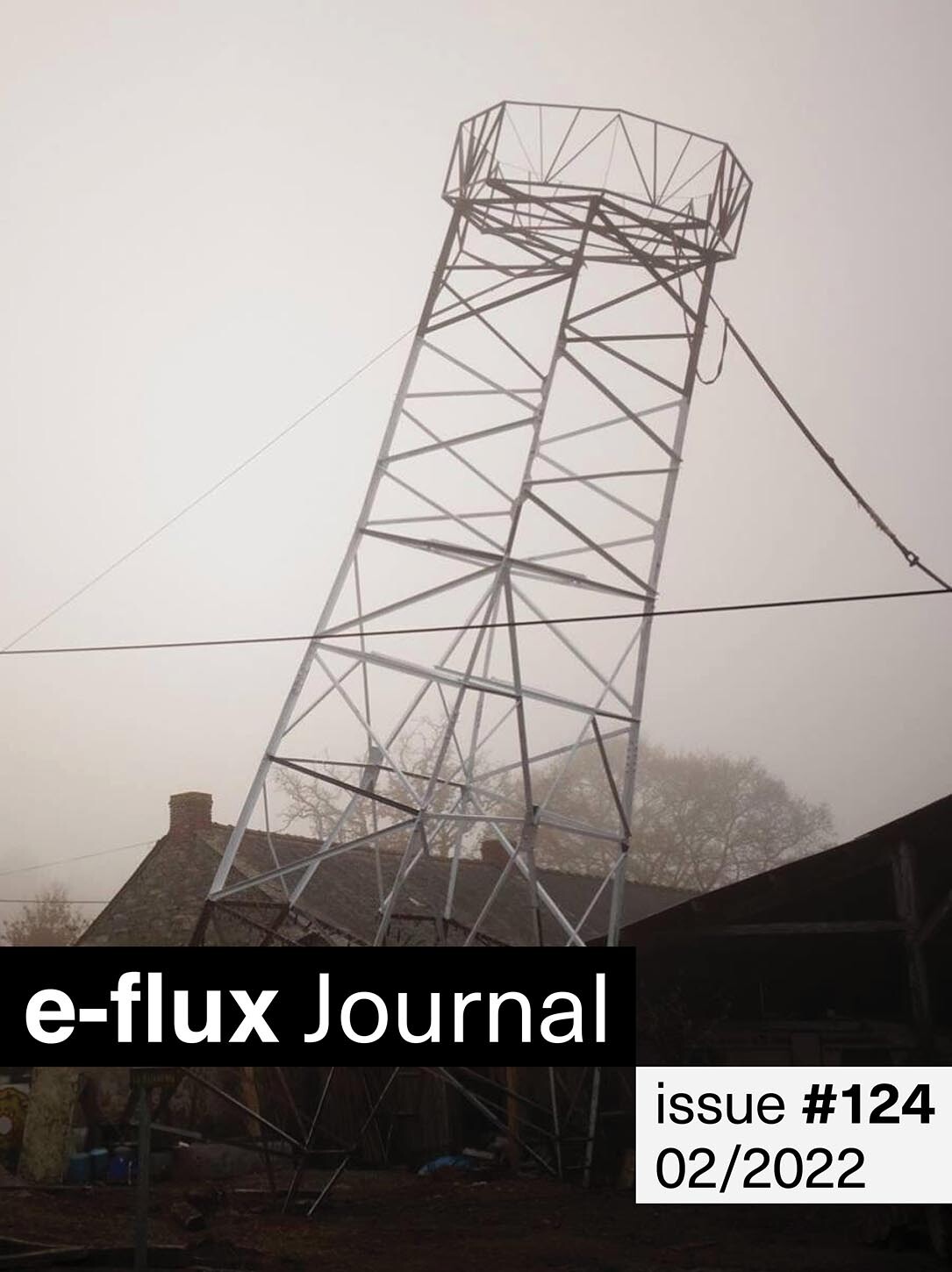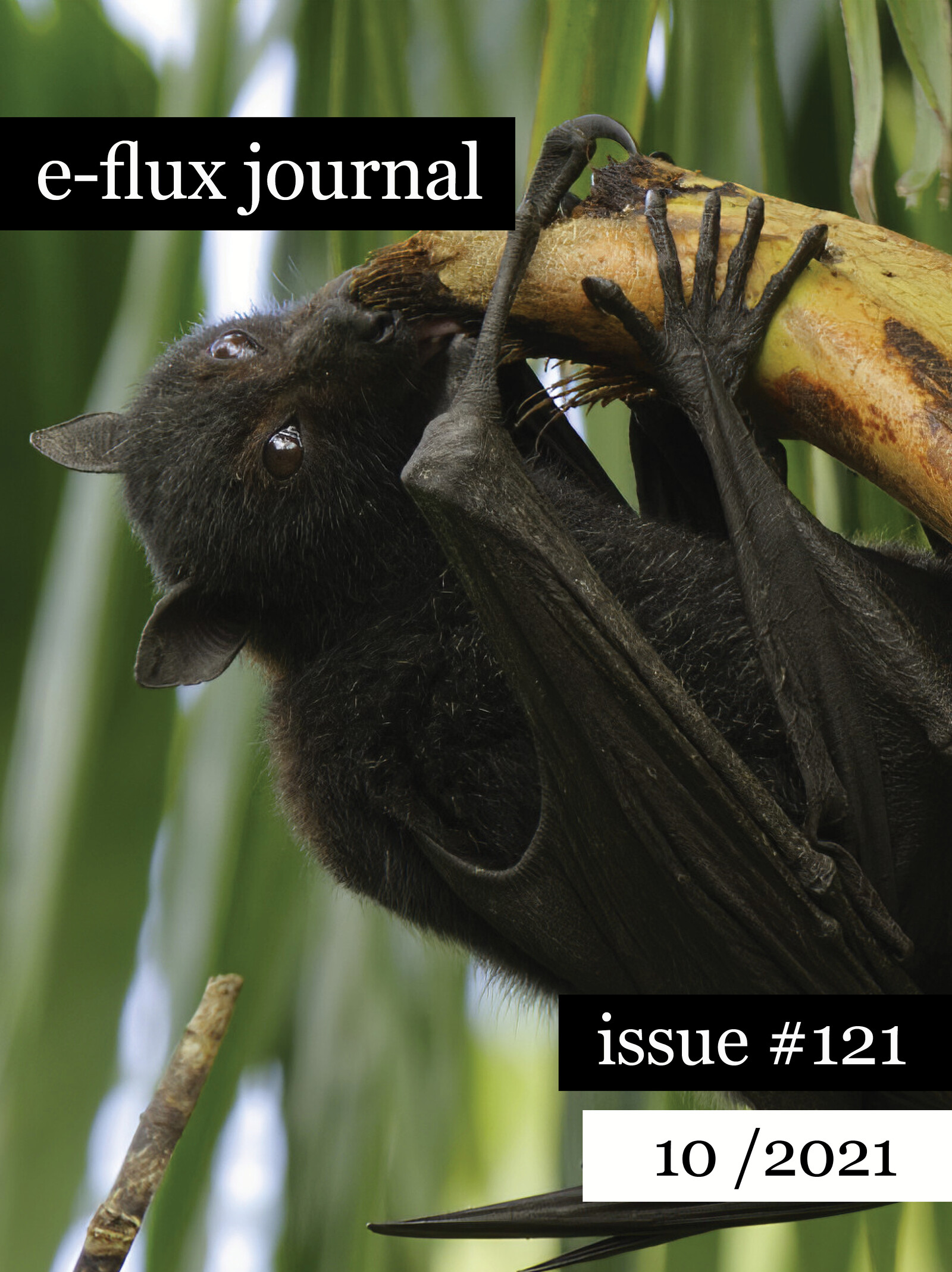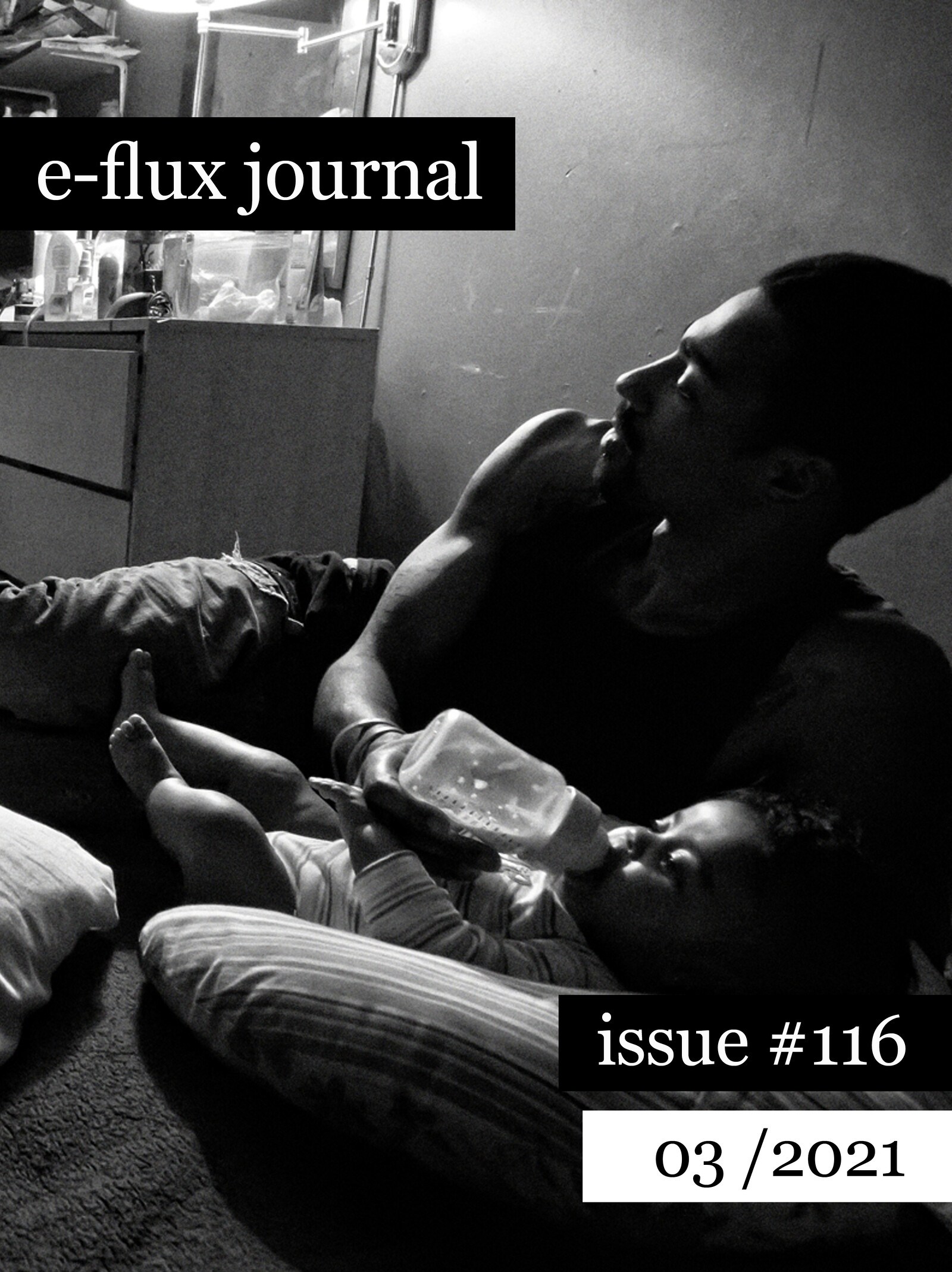The illogic of exclusion and exception is seductive. Perhaps we will all know ourselves better when we advertise our own place in the world by taking sides with regimes that masquerade as fixed identities and project illusory strength while actually being irreparably fragmented from within, just like we all are. The oppressed, on the other hand, know that a much larger struggle can only be sustained by distinguishing faithful from false witnesses among their own ranks as well as the enemy’s. True identity is forged by how we choose to bear witness, by what endures and grows in meaning as it is transmitted.
In this issue, Charles Mudede proposes that Octavia Butler brought us a viable theory of quantum movement. Who is capable of moving through time to haunt other people in other places and other times, and in which direction? Paradoxically—and there are many paradoxes—just as the hurt have been hurt, the dead can only be dead, and are for that reason no longer able to move forward in time to haunt us. We, however, are alive in our own time, and we feel pain on their behalf. It is we who reach out from the future—our present—to haunt them in the past. We are in fact the zombies of the already dead, mirrors of our own regrets, just as we are presently haunted by messengers from a future time warning us to not repeat what they know will not end well.
Often it seems like we are facing so many endings that we can only be living in the end times—a self-annihilation whose inevitability even appears deliberate. From climate projection to daily news, much of the apocalyptic tone we encounter has an almost celebratory character, as if the end times were more of an ideological construction than a common observation. Certainly a lot of it is macho clickbait or political brinkmanship, and in some cases actual worlds ending. But it also carries a stranger imaginative character in the absence of any significant political imagination by traditional standards. Indeed, taken as a literary tool more than a documentary one, perhaps there is more to the end of the world than we thought.
Part of what makes interviews so engaging to read is that they presume to share ideas on the fly, in a social setting and in the world. In comparison, written essays feel like constructed machines, lean and airtight with beginnings, middles, and ends. No wonder interviews, as a whole, seem a bit decadent in their procrastinatory pleasure. It’s like they catch interlocutors off guard when they should be doing something more serious. Interestingly though, the informality of speech is also a ruse, and a formal challenge for those who prefer to construct words and ideas methodically, because things sometimes spill out that wouldn’t be disciplined into more structured writing and thinking.
In this issue, Xin Wang details the haunting of China’s contemporary art by socialist-realist pedagogy from the Soviet Union. Perhaps even more significant than this line of influence is its near-total occlusion in Western accounts of China’s avant-garde lineages, no doubt related to Clement Greenberg’s assaults on Soviet socialist realism for epitomizing kitsch. Following Greenberg’s lead, Western scholars may have attempted to be generous by elevating works above lowly pictorial origins, but in doing so, they cleaved them not only from their key influences, but also from a range of formal innovations and attitudes specific to socialist modernity—a version of modernism that continues to persist through its negation, haunting artworks up to today …
In this issue, Boris Groys charts the self-transformation of the working class through labor itself. Workers’ bodies, through their own labor, become spiritualized—artificial forms of their own creation. Since modernity, the working class, held up as a universal whole, has practiced “secular ascesis,” even if by exploitation and oppression. And where does this spiritualized dimension of the working class manifest itself? As art.
In the first e-flux journal issue of 2023, the Ukranian researcher and curator Kateryna Iakovlenko points our eyes at images of forests. The first is from the site of a mass grave outside Izium, a city on the Donets River in eastern Ukraine. The bodies were gone by the time the photo was taken; instead, the photographer shows medics and the surrounding woods. Another is a nineteenth-century photograph of a forest in Tasmania picturing lush trees, which on close examination conceal colonizing British officers. A more recent Instagram photograph shows a feminist Ukrainian Army volunteer living, with others, among the trees they are protecting. A final photo was captured by an occupying Russian Federation soldier’s camera moments before his death outside Izium’s woods. His body remains out of view; his unambiguous vantage point of the exploded forest landscape remains.
In this issue of e-flux journal, deep glances at the past hope to make sense of the present by diving into history’s original abysses and early promises. Mi You brings us a refreshingly constructive analysis of this year’s documenta fifteen, its curators, its intended organizational structure, and its audiences. Olga Olina, Hallie Ayres, and Anton Vidokle chart suppressed, banned, and otherwise disappeared languages in a resource that sprawls over geography and time from 1367 to today, showing an ongoing process of erasure and survival that corresponds with the rise of nation-states.
In this issue of e-flux journal, Carolina Caycedo explains that so many climate activists in South America are murdered by the state that their friends and families have coined a new term for this loss: the dead aren’t killed so much as they are “sown,” like seeds. Their legacies are a source of abundant energy and knowledge to be used in continuing struggles against the collusion of extractive corporations and necropolitical states.
Chances are that in the last couple years, your life has been turned upside down by a pandemic, a war, an economic meltdown, or some combination of these. And you may feel that whatever you were lucky enough to avoid may already be on its way to you. As the coming years are sure to bring more uncertainty, maybe it’s time to prepare. Buy a small armory and move into an underground bunker? Blame foreigners or neighboring countries? Attack each other online? Let’s try instead to consider how our basic needs are met, as the individual and collective bodies that we are.
In this issue, Asia Bazdyrieva offers a broader picture of Ukraine’s significance as a biopolitical resource for Western European appetites. In Ukraine’s operational capacity as Europe’s “breadbasket,” a colonial imaginary unfolds that sees the country’s human, agricultural, and material resources as inert—ripe for extraction by a conqueror who can release their inexhaustible transactional benefits.
It’s unclear how many people still alive today can remember feeling the strange, warm rains that fell over the riverside city of Pripyat on the Ukraine-Belarus border in late April 1986. Pripyat was built in 1970 to serve the nearby Chernobyl Nuclear Power Plant, dedicated to harnessing the mirnyy atom (“peaceful atom”) for the Soviet Union. For the past thirty-six years, Pripyat and a surrounding exclusion zone of inconsistent bounds bridging swaths of today’s Ukraine, Belarus, and a bit of Russia have been off limits to most human beings.
A couple weeks ago, the world turned upside down again. Dnipro has been bombed again, but not by the Nazis. It’s like a bad dream one can’t wake up from: while thousands of people are being killed in Ukraine and millions are being displaced by the Russian army, nobody really seems to understand the reason or goal of such violence. While Ukraine is being bombed and destroyed, the social fabric of Russia and its economy are disintegrating under sanctions and martial law, and what is rapidly emerging is an isolated, impoverished, fascist state propelled by a death drive.
In the first e-flux journal issue of 2022, Bifo points out a recent social protest movement in China known as tangping (躺平, “lying flat”), in which young people increasingly opt out of the pressure to overwork by taking low-paying jobs or not working at all. In the US, “the Great Resignation” has been the name for four and a half million American workers who left their jobs at the end of 2020. But Bifo reminds us that “resignation” also means re-signification—a new meaning given to pleasure, richness, activity, and cooperation that may unveil a previously hidden egalitarian and frugal sensitivity following the exhaustion of the Western geopolitical order.
Two women sit at a sidewalk cafe in Manhattan. There are others around: suited bros poring over a spreadsheet, a possible fashion blogger, generally well-dressed white people. The women engage in dialogue and play a game. They talk Platonism, Nietzsche, femmunism, and also traps. The initial point of the game is to decide who has partaken in a particular sexual act, and who has given it or been taken by whom. As they speak, the women, in a dialogue written by McKenzie Wark, create a trans-for-trans space for communication, for a world both part of and separate from the cis one. As one woman tells the other, “They think they know our little secret, but we have information about being that they will never know.” As she says earlier, “We turn the cis gaze back on itself.”
It is now October, when the veils between worlds become thin. In this issue, there are human worlds and more-than-human worlds, and the university worlds, world wars, and art worlds that cross between them. Tam Donner plumbs the world we live in. Have you heard the one where universities give out honorary hoods to painters and warmongers alike? Take a look at the class pictures. Andreas Petrossiants follows the lead of Mount Etna, Europe’s oldest active volcano, where Pasolini may have seen a stage—or a screen—on which to feature the volcano’s ability to communize time, showing “linear, European time for the cruel joke of modernity that it is.”
As we step out of our homes this September to go back to school, go back to work, go back to traveling, we might pause for a moment to look back into this home, this peculiar chamber of private life that, in one way or another, we couldn’t exit for some time. Perhaps the outside world appears strange, menacing, or deceitful. Maybe it was from staying inside for too long.
We have never completely understood poetry. As a contemporary art publication, there’s no shortage of affection, admiration, or affinity for poetry, and e-flux journal has certainly published a few memorable poems over the years. But it always felt like a stroke of luck or a gift from the ether when someone brilliant would send us a poem. You won’t be surprised that this didn’t happen often. But now is the time to change that, and we’re honored to welcome Simone White as e-flux journal’s first ever poetry editor. Simone is the author of the collections or, on being the other woman (forthcoming from Duke University Press), Dear Angel of Death, Of Being Dispersed, and House Envy of All the World, and lives in Brooklyn. We’re so glad that she’s joined us.
On the occasion of the Taipei Biennial 2020 and together with the Taipei Fine Arts Museum (TFAM), this special issue of e-flux journal will also be available to read in Chinese in 2021. Titled “You and I Don’t Live on the Same Planet,” the issue deals with an increasingly pressing situation: people “around” the world no longer agree on what it means to live “on” earth—to such a radical extent that the foundational material and existential categories of “earth” and “world” are profoundly destabilized.
In this issue, Alessandra Franetovich and Trevor Paglen discuss Orbital Reflector, Paglen’s reflective sculpture launched into low-earth orbit as a satellite. Housed in a small box-like structure, the lightweight reflective material of the sculpture was meant to deploy and self-inflate like a balloon and reflect sunlight towards earth, making it visible to our eyes as a nearby artificial star. Unfortunately, at the critical moment of the sculpture’s release in 2018, the US government was on shutdown, with all agencies held hostage in order to force Congress to fund Trump’s gigantic border wall between the US and Mexico. There was no way to release the mirror.
Who remembers the title of last year’s Venice Biennale? One long year and change later, it seems that nobody’s worst enemy could have made a threat, a promise, or a curse that we may live in times quite as … “interesting” as the ones we find ourselves in now. Arguably, anyone paying even the most distant attention to 2019—or to history and the evolving present in general—could have foreseen what we were heading towards. It’s hard to imagine, though, that someone could have envisioned just how deadly fascinating these times would turn out to be.
It’s yet uncertain what the lasting legacy of 2020 will be. “The tradition of the oppressed teaches us,” Walter Benjamin wrote in 1940, “that the ‘state of emergency’ in which we live is not the exception but the rule.” We already know that in the US, the summer of 2020 will be remembered for its sustained state of emergency, when we emerged from stratified isolation and convened, in the millions, in the streets to affirm that black lives matter, that black breath is stolen at an overwhelmingly higher scale by the pandemic and by the largely extralegal military organization known as the police. Benjamin continues: “We must attain to a conception of history that is in keeping with this insight. Then we shall clearly realize that it is our task to bring about a real state of emergency, and this will improve our position in the struggle against Fascism.”
As the novel coronavirus pandemic spreads, we—the people of planet earth—are faced with a dizzying variety of responses: quarantine, containment, vigilant self-quarantine, paranoid self-isolation, and in some cases escape from the above. Suddenly, it is as if circulation itself has turned against us, making healthy freedom of movement in the world a dealer of death. So your flight is cancelled. Your trip is over. We are staying in place for the foreseeable future. Exhibitions, symposia, gatherings of all kinds are postponed. But not sporting events. Those will go on, but without any supporters in the stands. The players will play for empty stadiums and we will watch from home. It’s a good time to catch up on reading.
Art institutions, like any small or megalithic enterprise shot through with capital, are inherently political beasts. But the larger of these often try to gloss and shade away certain political lineages or leanings. So, though institutions may develop public strategies offering a new history of modern art that represents the diversity of its protagonists, the vague results are instead an obfuscation of political movements and hidden narratives that would otherwise offer power back to those overlooked and displaced. They continue to be buried deep in the still vast, unseen collection, or, more likely, never collected or touched by the institution in the first place. For example, there is no room in MoMA’s now 708,000 square feet for the major contributions to art made by practitioners of socialist realism. Nor for that matter do we see works even tenuously connected to that tradition—there is no section titled “In and Around Socialism.”
There is a certain plasticity of meaning inherent in any use of language. If that weren’t the case, poetry and literature would not exist. There would only be contracts, scientific formulas, shopping lists, and so forth. Journalism would be properly factual—there would be no fake news or disinformation. All utterances would document isolated events, never evoking larger patterns or tapping into hidden desires. But then the question arises: Even if language could be cleansed of all ambiguity and spin, what role would images play?






























